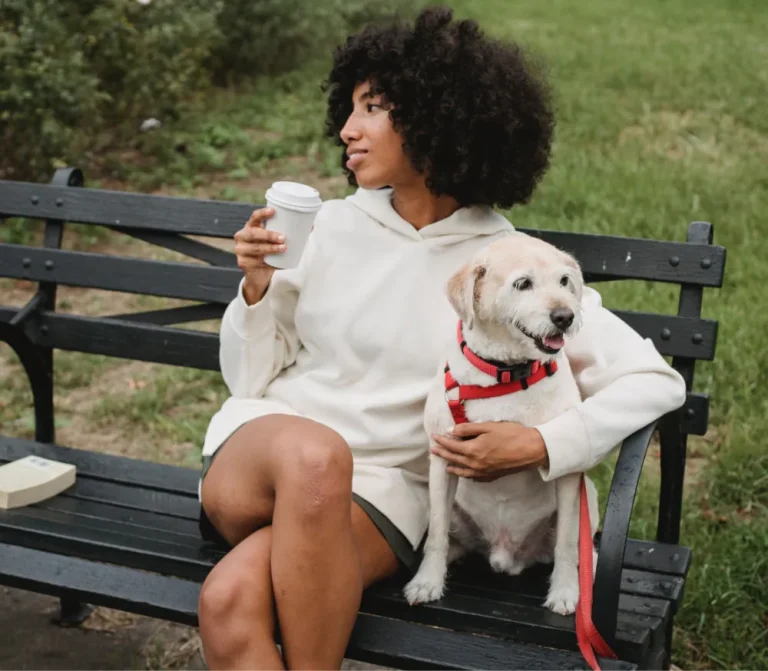
Pets have a unique way of communicating with us, relying on body language, vocalizations, and behavior to express their needs, emotions, and desires. As a pet owner, learning to interpret these signals can strengthen the bond you share and help ensure your pet’s happiness and well-being. Whether you have a dog, cat, or smaller pet like a rabbit or bird, understanding what your pet is really telling you can make all the difference in your relationship.
1. Reading Your Dog’s Body Language
Dogs are highly expressive animals, and their body language can reveal a lot about how they’re feeling.
- Tail Wagging: While a wagging tail often signifies happiness, it’s important to consider the context. A high, fast wag may indicate excitement or even aggression, while a low, slow wag can suggest uncertainty or submission.
- Ears: A dog’s ears can also give clues about their emotions. Ears held back or flat against the head often signal fear or anxiety, while perked-up ears show interest or alertness.
- Posture: A relaxed, loose body posture typically indicates a calm and content dog. In contrast, a stiff, tense posture with the tail raised high could mean the dog is feeling threatened or dominant.
- Barking and Growling: Vocalizations like barking, growling, or whining can express a range of emotions, from excitement and playfulness to fear and aggression. Pay attention to the pitch, duration, and context of these sounds to better understand what your dog is trying to communicate.
2. Decoding Your Cat’s Signals
Cats are more subtle in their communication, but their body language and behavior can be just as telling.
- Purring: Purring is often associated with contentment, but cats may also purr when they are anxious or in pain. If your cat is purring while also displaying signs of distress, such as hiding or being unusually quiet, it might be worth consulting a vet.
- Tail Movements: A cat’s tail can be a good indicator of their mood. A tail held high usually signals confidence and happiness, while a puffed-up tail indicates fear or aggression. A rapidly twitching tail often means the cat is annoyed or overstimulated.
- Slow Blinking: If your cat slowly blinks at you, it’s a sign of trust and affection. You can even return the gesture by slowly blinking back to communicate that you feel the same way.
- Kneading: Cats knead with their paws as a comforting behavior often linked to their kittenhood. It’s usually a sign that your cat feels safe and relaxed around you.
3. Interpreting Small Pets’ Behaviors
Smaller pets like rabbits, guinea pigs, and birds also have their own unique ways of communicating.
- Rabbits: A rabbit thumping its hind legs is usually a sign of alarm or frustration. On the other hand, a rabbit that flops onto its side is showing that it feels safe and relaxed. If a rabbit grinds its teeth softly, it’s a sign of contentment, similar to a cat’s purr, but loud tooth grinding may indicate pain.
- Guinea Pigs: Guinea pigs make a variety of sounds, each with its own meaning. A high-pitched squeal usually indicates excitement or a request for attention, while a low-pitched rumble can mean the guinea pig is feeling content. Teeth chattering, however, is a sign of annoyance or aggression.
- Birds: Birds communicate through both vocalizations and body language. A bird that fluffs up its feathers may be trying to keep warm, but if it’s accompanied by a lack of activity, it could indicate illness. Birds that bob their heads or tilt them to one side are often showing interest or curiosity.
4. Understanding Common Behavioral Issues
Some pet behaviors can be puzzling or even problematic, but they often have underlying causes that are worth exploring.
- Separation Anxiety: Pets, especially dogs, may exhibit behaviors like excessive barking, destructive chewing, or soiling in the house when left alone. These are signs of separation anxiety, a condition where the pet becomes overly attached to their owner and distressed when separated. Addressing this issue might require gradual desensitization and positive reinforcement to help the pet feel more secure.
- Aggression: Aggression in pets can be caused by fear, territoriality, or frustration. It’s important to identify the triggers for aggressive behavior and work with a professional trainer or behaviorist if needed to address the root cause and manage the behavior safely.
- Over-Grooming: Cats and some other animals may over-groom when they’re stressed, leading to hair loss and skin issues. This behavior can be caused by a variety of factors, including changes in the environment, boredom, or medical conditions. Identifying and addressing the cause is key to resolving the behavior.
- Litter Box Issues: If a cat suddenly stops using the litter box, it could be a sign of stress, a dislike of the litter, or a medical issue like a urinary tract infection. Ensuring the litter box is clean, accessible, and in a quiet location can help, but if the problem persists, a vet visit may be necessary.
5. Building a Stronger Bond Through Understanding
The more you understand your pet’s behavior, the better you’ll be able to meet their needs and strengthen the bond you share. Here are some additional tips to help you connect with your pet on a deeper level:
- Observe Closely: Spend time observing your pet in different situations. This will help you learn what makes them happy, anxious, or stressed and how they communicate these emotions.
- Be Patient: Every pet is unique, and it may take time to fully understand their behavior. Be patient and give them the space they need to express themselves.
- Provide Enrichment: Boredom can lead to behavioral issues, so provide plenty of enrichment activities for your pet. This could include interactive toys, puzzle feeders, or new experiences like walks or playdates.
- Seek Professional Help: If you’re struggling to understand or manage your pet’s behavior, don’t hesitate to seek help from a veterinarian or animal behaviorist. They can offer expert advice and support tailored to your pet’s specific needs.
Conclusion
Understanding your pet’s behavior is a key aspect of being a responsible and loving pet owner. By learning to read their signals and respond appropriately, you can create a harmonious environment where your pet feels safe, understood, and loved. Remember, your pet may not speak your language, but they are always communicating with you—so take the time to listen, observe, and connect with them on a deeper level.



